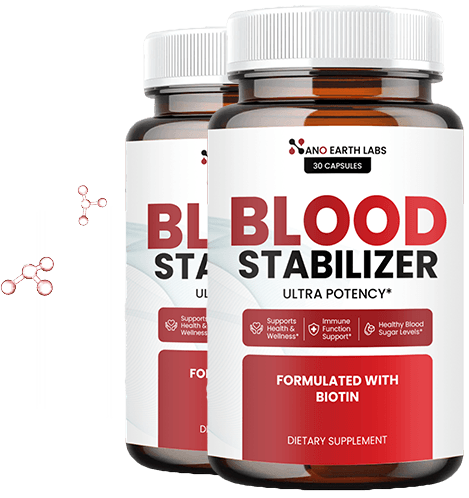How Long does Sugar Stay in Your System?
페이지 정보
작성자 Joellen Bogan 작성일25-08-04 14:48 조회7회 댓글0건관련링크
본문
For instance, easy sugars present in sweet or soda are rapidly digested and could cause a spike in blood sugar within 15 to 30 minutes. As compared, carbs or sugars from whole foods, such as entire grains or dairy products, are digested more slowly because of their fiber or protein content material, resulting in a extra gradual rise in blood sugar levels. How Long Does Sugar Stay in the Bloodstream? Blood sugar levels start to rise inside minutes of eating and often peak about 60 minutes later. The physique then begins to bring levels back down, sometimes returning to baseline within two to three hours after eating. This process may take longer in case you eat a large meal high in carbohydrates, especially if they're made up of refined carbs or added sugars. This could lead to extended elevated blood sugar ranges which will last several hours or Nano Earth Labs Blood Stabilizer Earth Labs Blood Gummies extra. In some people with diabetes, it might take even longer for blood sugar to return to normal, relying on the type and quantity of meals eaten, medications, and other health factors.

 PSSM is presently a sizzling matter in the equestrian world. But what’s the story behind these four letters? Muscle cells build up glycogen shops to have vitality available for muscle work. Glycogen is a fancy carbohydrate made up of many small blood sugar molecules (glucose). In PSSM, the glycogen construct-up and breakdown processes are altered. Horses with PSSM construct up glycogen in certain muscle fibres quicker than healthy horses do. However, the excess glycogen stores can not be used to supply power, because the breakdown into glucose is not doable. The overloading of the muscle cells with glycogen and the lack of access trigger issues for affected horses; these problems will be mentioned beneath. It's now recognized that this muscle metabolism disorder has varied causes, and so it is mostly separated into two varieties: Type 1 PSSM and type 2 PSSM. Scientists have been in a position to make clear that Type 1 PSSM entails a certain genetic mutation inflicting impaired glycogen metabolism.
PSSM is presently a sizzling matter in the equestrian world. But what’s the story behind these four letters? Muscle cells build up glycogen shops to have vitality available for muscle work. Glycogen is a fancy carbohydrate made up of many small blood sugar molecules (glucose). In PSSM, the glycogen construct-up and breakdown processes are altered. Horses with PSSM construct up glycogen in certain muscle fibres quicker than healthy horses do. However, the excess glycogen stores can not be used to supply power, because the breakdown into glucose is not doable. The overloading of the muscle cells with glycogen and the lack of access trigger issues for affected horses; these problems will be mentioned beneath. It's now recognized that this muscle metabolism disorder has varied causes, and so it is mostly separated into two varieties: Type 1 PSSM and type 2 PSSM. Scientists have been in a position to make clear that Type 1 PSSM entails a certain genetic mutation inflicting impaired glycogen metabolism.
Warm up totally, then climb a hill, do a time trial, or journey long intervals. The other days should be simple or rest days to allow ample recovery. Once a month, ride a time trial over the identical course to gauge your fitness. By the tip of your intensity coaching you've built up your endurance till you've got the stamina to experience a double century without an excessive amount of suffering and you have developed aerobic velocity over shorter distances. During your peaking section you maintain the endurance and develop that pace over longer rides. This phase is normally quick, a month or so to sharpen you for the key double(s) in your season. Keep the weekly mileage the identical, blood stabilizer by Nano Earth Labs and even slightly less, than during your intensity training. Every different weekend, do an endurance ride of 135 to one hundred fifty miles. Try to maintain a gentle tempo and focus on minimizing off-the-bike time. On the alternate weekends, trip fast centuries. Ride these sooner than you plan to journey the massive double(s).
The difference is that in CFS the ANS dysfunction happens after much decrease ranges of stress or activity. Similar ANS dysfunction is seen in burnout and Gulf conflict syndrome. The ANS dysfunction seen in burnout and CFS could cause orthostatic intolerance, resulting in dizziness, fainting and low blood strain on standing up, along with dysfunction of the gastrointestinal, urinary, Nano Earth Labs Review temperature regulation, bowel function, metabolic and hormone systems. More research is required to understand what causes the ANS dysfunction. It could also be that the conventional "brake" on sympathetic activation in the prefrontal cortex isn't working properly, in order that the sympathetic nervous system is at all times hyperactive, leading to reduced parasympathetic activation. Alternatively it may be that there is decreased parasympathetic drive because of fatigue, and Nano Earth Labs Review the elevated sympathetic activation is compensatory. Heart rate variability refers to beat-to-beat changes within the size of the heartbeat timing. The vagus nerve of the parasympathetic nervous system controls this beat-to-beat timing of the center rhythm, so measuring the small changes in heart price can provide an estimate of parasympathetic nervous system exercise.
